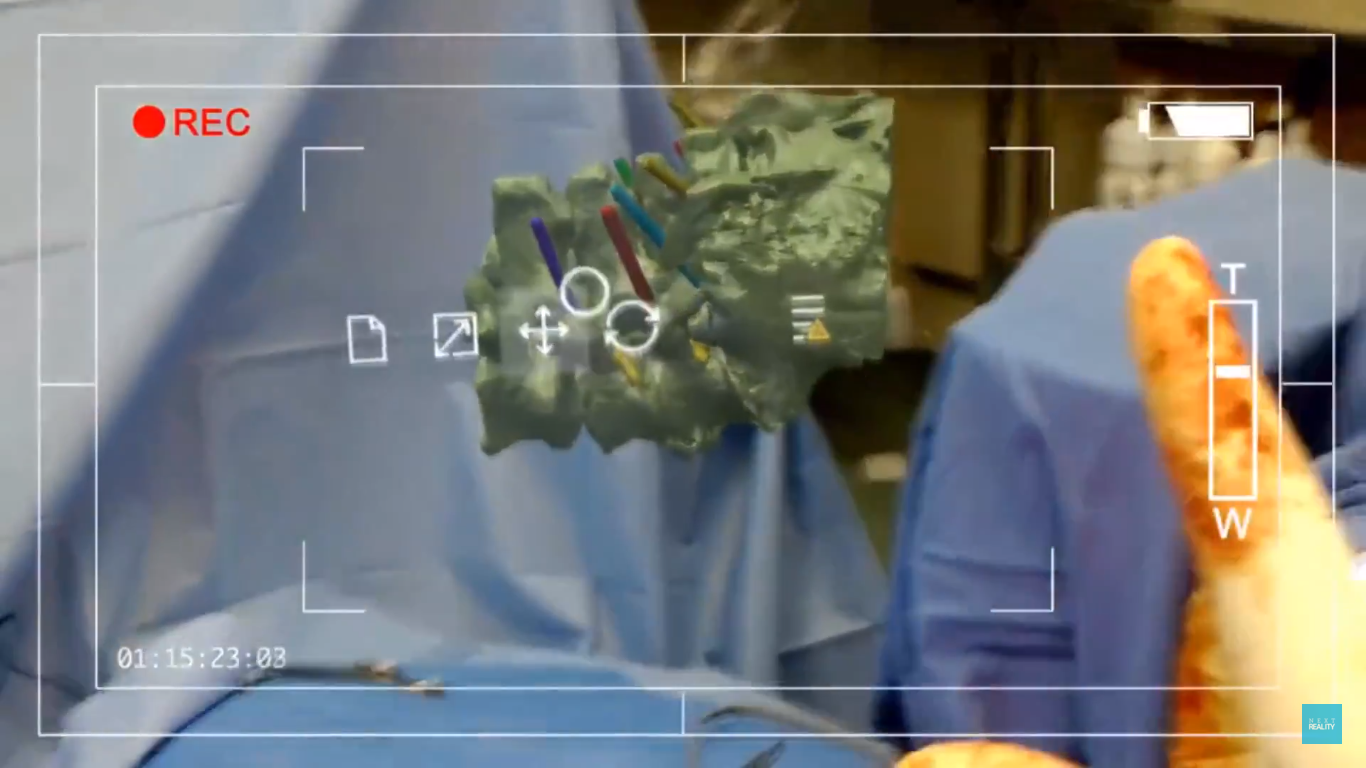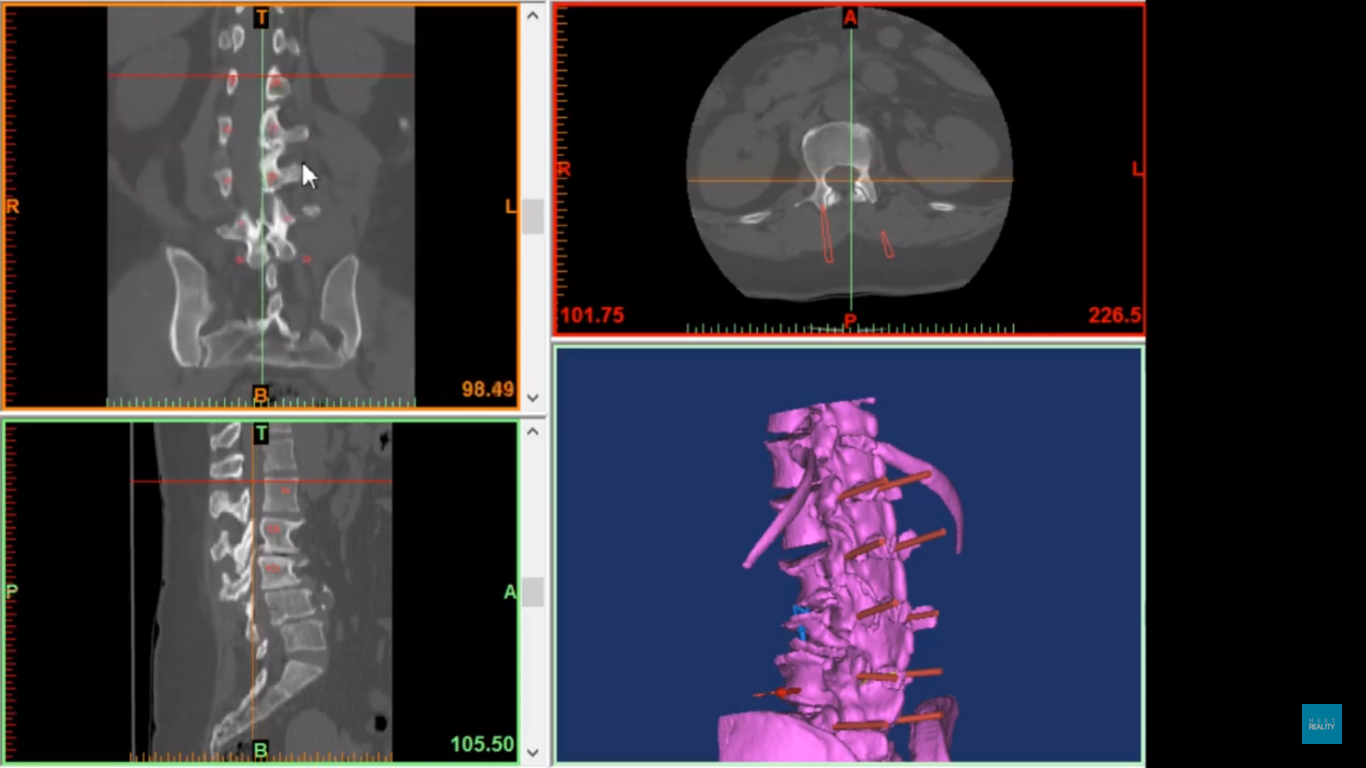Brazilian doctors are using Microsoft’s HoloLens in order to improve spine surgery. In an interview with NextReality, Dr Henrique Lampert, an orthopeadic spine surgeon in Southern Brazil, and his partner Dr Bruno Gobbato have managed to perform surgery with aid from the device. The aim of their project, Lampert explains to NextReality, is to improve the precision of delicate surgical procedures. This is particularly vital in spine surgery since they are required to insert small pedicle screws into the spine.
Mixed reality
The doctors highlight that ideally CT scanning equipment would be used in the operating room, however this is not always an option in some hospitals in their country. Therefore they have turned to HoloLens to help visualize their goal. The mixed reality device enables the surgeon to visualize a 3D model of the spine with the correct placements of the screws in front of them during surgery (as pictured below).

According to Dr Lampert, misplacement can be disastrous and cause neural damage and implant loosening. This technique is especially important for countries like Brazil as the HoloLens provides a relatively low cost solution since “In some places, there is CT scan available in the surgery room and neuronavigation systems, but that’s not our reality in Brazil.”

3D Printing inspiration
The project began after Dr. Lampert’s partner Dr. Gobbato was working on a 3D printing project and Lampert saw the opportunity to use mixed reality to bring even more benefits than working with the 3D printed preoperative models alone. Dr. Gobbato was 3D scanning and printing models in order to plan for surgery, but the HoloLens allows a surgeon to manipulate hands-free.
Speaking about the challenges of the work Dr. Lampert says the most difficult thing when working with these mixed reality models is, “the need to simplify meshes without losing anatomical details that are important for surgery reference.” 3D printing and scanning are increasingly advanced tools for use in medicine with doctors 3D printing a realistic brain model for training in Neurosurgery.
Finger Food Studios
Another recent innovation involving the HoloLens comes from Canada. Finger Food Studios have recently opened their new 25,000 sq ft warehouse which, with a TNG hat-tip, they have called ‘The Holodeck’. This space is, according to the company, the ‘largest dedicated Holographic design and development studio in the world‘. With this, the Vancouver based start-up say they are ‘Radically evolving the way Industry works’. The company are a designing platform and will use their new space to design large scale objects, such as Trucks. Working with a company who were looking to redesign their trucks, CEO Ryan Peterson explains the benefits of their service,
When trucks normally go through that restyling—making them look more modern, or changing the aerodynamics—engineers work with a huge, life-size clay model, which takes about six months to create. Instead, we made a life-sized hologram, and built it so you could manipulate the truck design while wearing the headset. It cut the process down to three days.

The advantages of this process clearly being time efficiency but also the mixed reality device enables the user to adapt a 3D digital design in real time. Finger Food Studios are one of a number of companies looking at mixed reality to support the design process as we recently saw Trimble releasing a new app SketchUp for HoloLens . Also we have seen how a major truck manufacturer are using 3D printing to make cost savings.
Featured image shows the HoloLens device in use before surgery. Image via NextReality.



